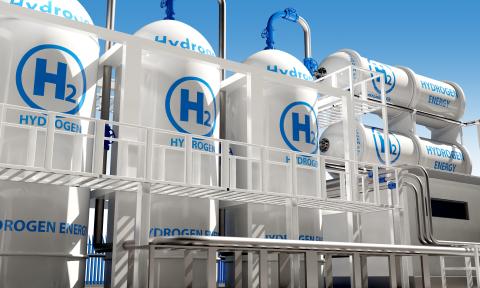Wind-solar hybrid: India’s next wave of renewable energy growth
Download Full Report
View Press Release
Key Findings
Wind-solar hybrid systems can produce more consistent power because solar power is produced during the day, while wind power is typically strongest at night.
Much of India’s solar and wind power potential is concentrated in Gujarat, Tamil Nadu, Karnataka, Maharashtra and Rajasthan.
The hybrid market presents a lucrative opportunity to cater to corporate consumer demand in the long run.
Executive Summary
India’s total renewable power installed capacity is 88 gigawatts (GW), with ~38GW of standalone wind energy capacity and 35GW of solar energy capacity as of August 2020. India has plans to reach a total 175GW of renewable energy (including 100GW of solar and 60GW of wind) by 2022 and 450GW by 2030.
As this energy transition accelerates, we need to explore various options, technologies and business models – aside from plain vanilla contracts – to expedite the adoption of increasing amounts of low-cost but intermittent renewable energy (RE).
Wind-solar hybrid (WSH), which harnesses both solar and wind energy, is fast emerging as a viable new renewable energy structure in India due to the high potential of both wind and solar resources across various locations and the provision of enhanced grid stability and reliability.
Wind-solar hybrid is fast emerging as a viable new renewable energy system in India.
To promote the setting up of WSH power plants, the Ministry of New and Renewable Energy (MNRE) adopted the National Wind-Solar Hybrid Policy in 2018 which also provides certain waivers and incentives to developers. Various state governments have also come up with their own WSH policies including Gujarat, Andhra Pradesh and Rajasthan.
As per the tenders allotted under various central and state schemes, according to JMK Research estimates, about 11.6GW of WSH power is likely to come up over the next three years, riding on strong support from Solar Energy Corporation of India (SECI) and several state governments. Capacity addition will rise at a compound annual growth rate (CAGR) of 223% from 2020-2023.
SECI tenders for WSH without storage have attracted low tariffs to the tune of Rs2.67/kWh (US¢3.7/kWh) which are comparable to solar tariffs. Adani Green Energy, SB Energy, Greenko and ReNew Power are the key active participants across WSH tenders.
To understand the tariff trends for WSH projects, we developed a financial model for a 250MW wind-solar hybrid project based on the various assumptions gathered from stakeholder consultations. Our analysis shows that for solar and wind blended at a ratio of 80:20 respectively for a 250MW WSH plant, the levelised tariff comes to Rs2.49/kWh (US¢3.32/kWh), while blending solar and wind at a ratio of 50:50 results in a tariff of about Rs2.57/kWh (US¢3.43/kWh).
On analysing the impact of adding a storage component to the WSH project, for a 2- hour battery back-up, the levelised tariff increases substantially to Rs4.59/kWh (US¢6.12/kWh).
Clearly, adding battery storage is not a feasible option at present because it significantly increases project costs and hence the tariffs. However, the declining trend in the battery prices will make these projects viable within a few years and provide more stable power. The engineering, procurement and construction (EPC) cost of battery storage is expected to fall by 15-20% to US$250-270/kWh by 2021 from $300-320 per kWh at present.
As part of this report, we have analysed in detail national and state policies and regulatory developments, tender activity, key players in the market, upcoming capacity addition, tariff analysis and the risks and challenges associated with WSH technology.
Please view full report PDF for references and sources.

















